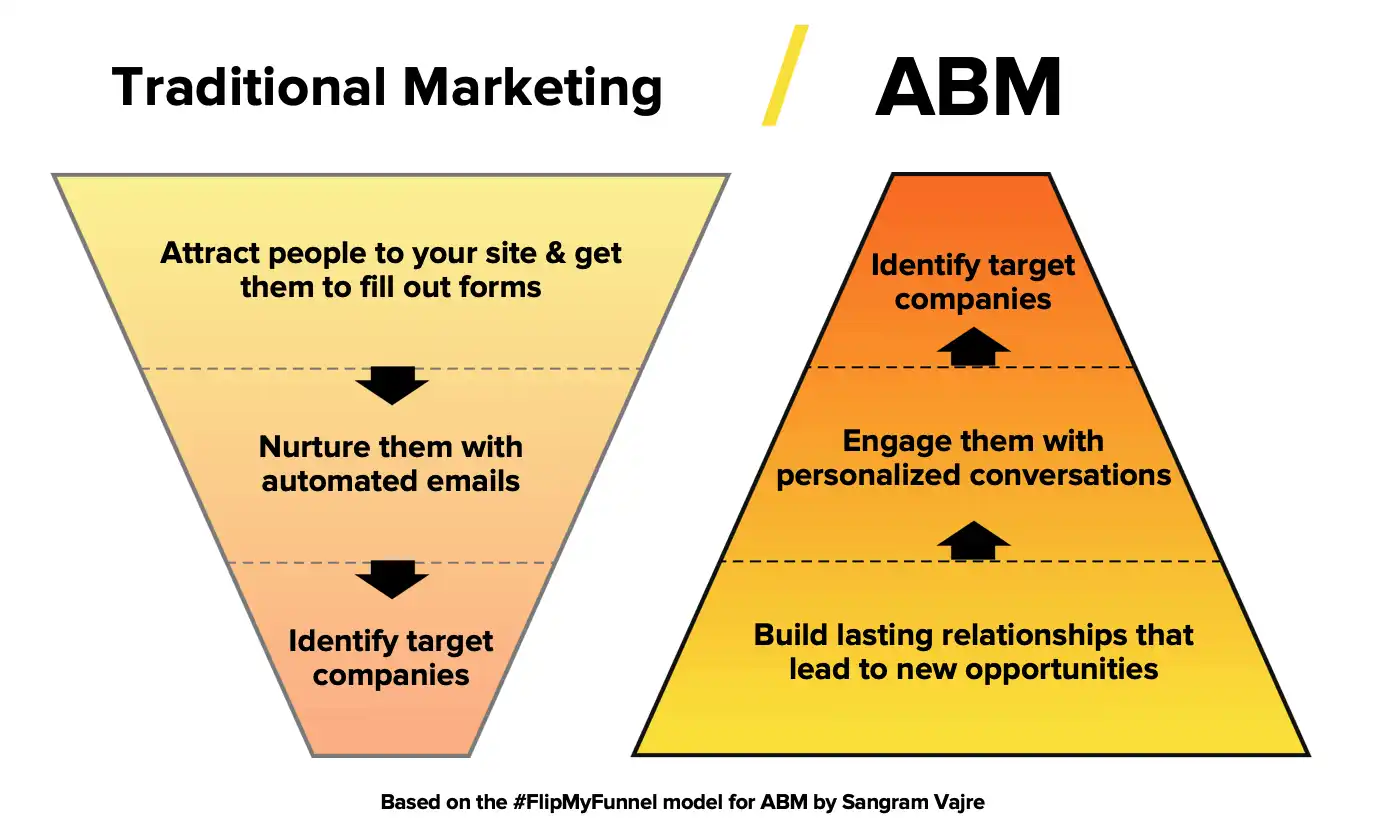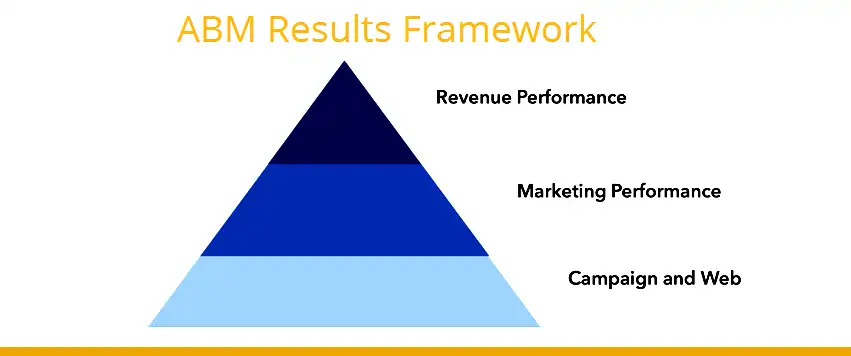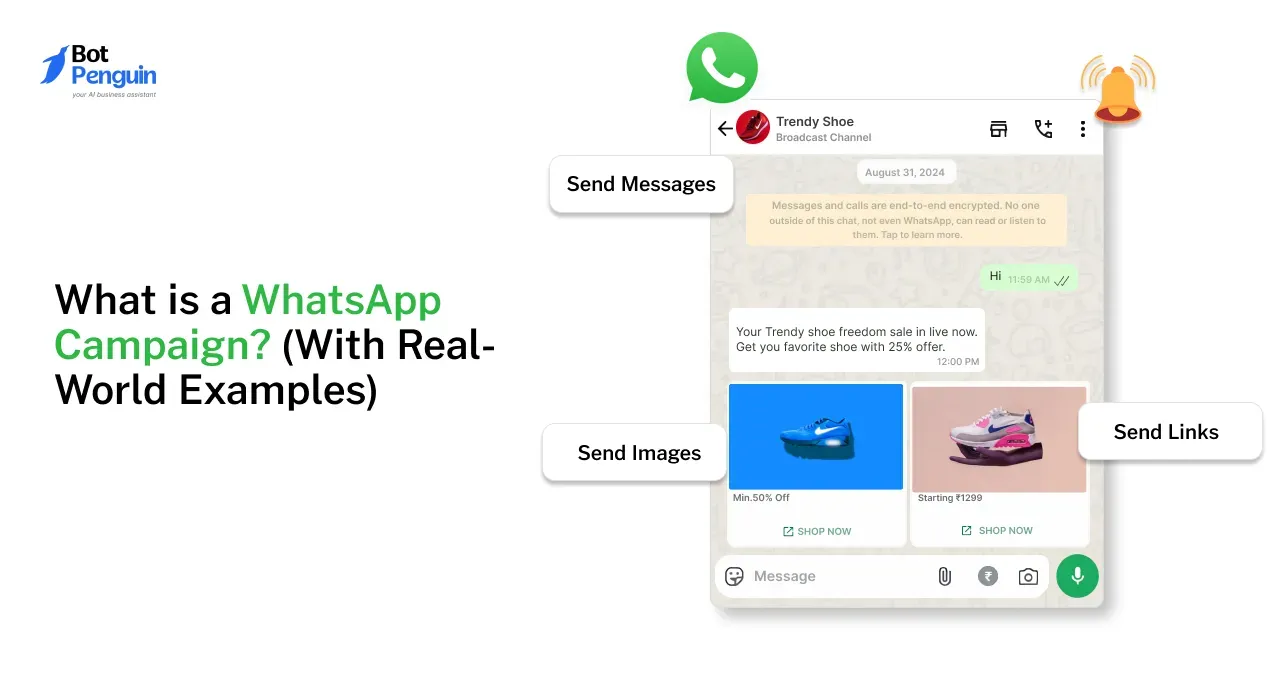Introduction
Is ABM dead?
Some may argue that account-based marketing is passé. But the truth is that a targeted, personalized approach to engaging key accounts is more vital than ever in today's fragmented media landscape.
Savvy B2B marketers recognize that mass-marketing messages simply don’t cut it anymore. Tailoring campaigns to resonate with specific accounts requires thoughtful strategy and flawless execution.
This guide provides actionable insights into implementing an effective ABM marketing strategy approach. It talks about identifying high-value accounts and understanding their needs, to developing personalized content and evaluating performance.
With clear examples and tactical advice, it empowers marketers to drive meaningful engagement and accelerate sales cycles. ABM may have its detractors, but lean in, and you’ll uncover compelling reasons to make it a pillar of your go-to-market strategy.
Let’s dig into the data-driven approach needed to orchestrate multi-channel campaigns that get results. It's time to re-evaluate ABM with fresh eyes.
Understanding Your Target Audience

Understanding your target audience is a critical step in ABM. By identifying and segmenting key accounts and conducting in-depth research, you can create tailored campaigns that resonate with the needs and preferences of your target audience and increase the chances of conversion and business outcomes.
Identifying and segmenting key accounts for ABM
In Account-Based Marketing (ABM), identifying and segmenting key accounts is critical to a successful ABM strategy. It enables businesses to concentrate their time and money on the most valued prospects, increasing the likelihood of conversion and commercial consequences.
Companies should consider various factors to identify key accounts, including company size, revenue potential, industry, and market position. Once identified, these key accounts should be segmented based on their characteristics and level of engagement with the company.
Segmentation can be done by criteria such as industry vertical, company size, location, revenue, technology decisions, and others.
Conducting thorough research to understand your audience's pain points and goals
Conducting thorough research to understand your target audience's pain points and goals is also integral to developing a successful ABM marketing strategy.
By understanding what drives your audience and their challenges, you can tailor your messaging, content, and offers to resonate with their needs and increase engagement.
Thorough research often involves gathering data from various sources, including existing customer data, third-party research reports, social media, website traffic, and other sources.
Data-driven insights can help you understand what is most important to your target accounts, what they are searching for, which platforms to target, and which messages to use to get their attention.
Building a Personalized ABM Campaign

Building a personalized ABM campaign is the second ABM strategy for B2B excellence. It requires a deep understanding of the target accounts and the ability to craft tailored messaging and create personalized content and offers.
Companies can build stronger connections and increase the likelihood of conversion and success in their ABM campaigns by demonstrating a strong understanding of the target audience and providing solutions that directly address their pain points and goals.
Crafting tailored messaging for targeted accounts
Building a personalized ABM campaign involves crafting tailored messaging for targeted accounts. Rather than using a one-size-fits-all approach, personalized messaging acknowledges each account's unique challenges, pain points, and goals.
By speaking directly to their specific needs, companies can establish a stronger connection and demonstrate their understanding of their audience's priorities.
Companies should consider conducting thorough research on each account to craft tailored messaging to gather insights into their industry trends, company values, and decision-making processes.
This research ABM strategy for B2B excellence can help to identify the key pain points that the account is facing and allow the marketing team to create messaging that directly addresses these challenges.
Moreover, understanding the goals of each target account enables marketers to align their messaging with the outcomes the account wants to achieve.
Creating personalized content and offers is another critical aspect of building a successful ABM campaign. This involves developing content assets and offers that resonate with the target audience's interests, preferences, and pain points.
Whether whitepapers, case studies, webinars, or exclusive discounts, personalized content and offers demonstrate value and relevance to the target accounts.
Creating personalized content and offers that resonate with your audience
Creating personalized content requires deeply understanding the audience's interests and needs. Using the insights gathered during the research phase, companies can create content and offers that directly address their target accounts' pain points and goals.
Personalized content also helps establish credibility and build trust with the audience. As it shows that the company understands its challenges and has the solutions they seek.
To execute a personalized ABM marketing strategy effectively, leveraging marketing automation tools and technologies may be necessary. These tools can help scale personalization efforts by segmenting accounts, automating content delivery, and tracking engagement.
Using these tools, companies can deliver the right message to the right account at the right time. It ensures their personalized campaigns are executed efficiently and at scale.
If you are the one who likes the no coding chatbot building process, then meet BotPenguin, the home of chatbot solutions. With all the heavy work of chatbot development already done for you, simply use its drag-and-drop feature to build an AI-powered chatbot for platforms like:
- WhatsApp Chatbot
- Facebook Chatbot
- Wordpress Chatbot
- Telegram Chatbot
- Website Chatbot
- Squarespace Chatbot
- Woocommerce Chatbot
- Instagram Chatbot
- MS-Teams Chatbot
- Shopify Chatbot
Implementing ABM Tactics and Tools
Companies can enhance their targeting, engagement, and overall campaign success by selecting the right ABM strategy for B2B excellence and utilizing these tools and platforms effectively.
The key is to align these tactics and tools with the specific goals and objectives of the ABM campaign.
Choosing the right ABM tactics based on your goals
Implementing ABM tactics and utilizing the right tools is crucial for successfully executing an ABM campaign. The campaign's aims and objectives should guide the approach and tool selection.
The first step in using ABM strategy is to determine your objectives. Do you want to raise awareness, create leads, nurture current clients, or increase income from certain accounts? Depending on your objectives, you may select the most suited ABM methods to achieve them.
Common ABM tactics include:
- Account-based advertising: Targeting specific accounts through digital advertising platforms to increase awareness and engagement.
- Personalized content marketing: Developing and delivering personalized content to key accounts, addressing their pain points and providing solutions.
- Account-based social selling: using social media platforms to engage with key decision-makers and build relationships.
- Sales and marketing alignment: Ensuring close collaboration and alignment between the sales and marketing teams to ensure consistent messaging and optimization of customer touchpoints.
- Events and webinars: Hosting or participating in events and webinars targeted at specific accounts to provide valuable insights and network with key decision-makers.
Exploring various ABM tools and platforms for effective campaign execution
After choosing the right ABM strategy, it's essential to explore various ABM tools and platforms to support campaign execution. These tools can help streamline and automate various tasks, improve efficiency, and track campaign performance.
Some popular ABM tools and platforms include:
- Customer Relationship Management (CRM) systems: CRMs facilitate tracking and managing customer interactions and data, allowing for more personalized and effective account management.
- Marketing Automation platforms: These platforms enable the automation of marketing campaigns and workflows, helping deliver personalized content at scale and measure campaign effectiveness.
- Account-based advertising platforms: Platforms like LinkedIn Advertising or Demandbase enable companies to target specific accounts with their advertising efforts.
- Social Media Management tools: Tools like Hootsuite or Sprout Social assist in managing, scheduling, and measuring social media activities across platforms to engage with key accounts effectively.
- Data Analytics and Reporting tools: These tools provide insights into campaign performance, allowing marketers to measure and optimize their ABM efforts.
- Sales Enablement tools: Tools like Salesforce or Outreach help sales teams manage prospecting efforts, track customer interactions, and automate sales workflows.
Measuring and Optimizing ABM Results

Measuring and optimizing ABM results is a critical step in ensuring the success and effectiveness of your campaigns. To effectively measure and optimize ABM efforts, setting clear goals and key performance indicators (KPIs) is crucial.
Setting clear goals and KPIs for your ABM campaigns
Setting clear goals and KPIs allows you to define success for your ABM strategy campaigns and provides a framework for tracking and evaluating performance.
These goals and KPIs will vary based on the specific objectives of your campaigns, whether it's generating leads, increasing revenue from existing customers, or strengthening customer relationships.
Monitoring and analyzing key metrics to measure success
Once your goals and KPIs are established, the next step is to monitor and analyze key metrics throughout your ABM campaigns.
This includes tracking metrics such as engagement rates, conversion rates, pipeline velocity, revenue generated, and customer retention. Monitoring these metrics will allow you to assess your campaigns' effectiveness and identify improvement areas.
In addition to evaluating individual campaign metrics, it's essential to look at the overall impact of your ABM efforts on business outcomes. This includes assessing your campaigns' return on investment (ROI), customer lifetime value (CLV), and overall revenue growth from target accounts.
By tying your ABM efforts to business outcomes, you can demonstrate the value and impact of your campaigns to key stakeholders.
Making data-driven decisions to optimize future ABM efforts
To optimize your future ABM efforts, making data-driven decisions is crucial. By analyzing the data and insights gathered during your ABM campaigns, you can identify patterns, trends, and areas of improvement. This might involve tweaking messaging, adjusting target account selection, refining content and offers, or reallocating resources to the most successful channels and tactics.
By continuously measuring and analyzing ABM results, you can make data-driven decisions that lead to continuous improvement and optimization of your ABM efforts. It's crucial to be agile and adapt your strategies based on insights from the data to ensure that your campaigns are always evolving and delivering the best possible results.
Conclusion
In conclusion, mastering ABM (Account-Based Marketing) strategy for B2B excellence is essential for modern businesses aiming to thrive in competitive markets. By personalizing marketing efforts and aligning them with the unique needs of target accounts, companies can enhance customer relationships and drive revenue growth.
Effective ABM requires meticulous planning, thorough research, and strategic execution. Identifying high-value accounts, understanding their pain points, and crafting tailored messaging are crucial steps in this process. Moreover, leveraging technology and data analytics empowers organizations to deliver highly relevant content and experiences to their target audience.
Furthermore, collaboration between sales and marketing teams is imperative for successful ABM implementation. Alignment between these departments ensures seamless coordination throughout the customer journey, from initial engagement to conversion and beyond.
Ultimately, mastering ABM strategy enables businesses to cultivate stronger connections with key accounts, resulting in increased customer loyalty and advocacy. By focusing resources on the most promising opportunities, organizations can optimize their marketing efforts and achieve sustainable growth in the B2B landscape.
In essence, embracing ABM as a core component of B2B marketing strategy equips businesses with the tools and insights needed to outperform competitors and deliver exceptional value to their clients.
Suggested Reading:
The complete guide to free lead generation tools for B2B and B2C!
Frequently Asked Questions (FAQs)
What is ABM and why is it important in B2B marketing?
Account-Based Marketing (ABM) is a targeted marketing approach that focuses on specific high-value accounts. It is important in B2B marketing because it allows businesses to personalize their messaging and content, increase engagement, and drive revenue from top accounts.
How do I identify the right target accounts for my ABM strategy?
Conduct thorough research to identify target accounts that align with your ideal customer profile. Consider factors such as revenue potential, industry relevance, and fit with your product or service offering.
What are some effective ABM tactics?
Effective ABM tactics include account-based advertising, personalized content marketing, account-based social selling, and events/webinars tailored to target accounts. Choose ABM Strategy that align with your goals and resonate with your target audience.
How can collaboration between sales and marketing teams improve ABM strategies?
Collaboration between sales and marketing teams ensures consistent messaging, effective coordination, and a unified approach towards target accounts. Sharing insights and data helps align efforts and maximize impact.
How do I measure the success of my ABM campaigns?
Set clear goals and key performance indicators (KPIs) from the start. Monitor metrics such as engagement rates, lead quality, pipeline velocity, revenue generated, and customer retention to measure the success of your ABM campaigns.
How can I continuously optimize my ABM strategies?
Regularly evaluate the performance of your ABM marketing strategy, gather feedback, and make necessary adjustments. Test different approaches, measure results, and adapt your strategies based on data-driven insights for continuous optimization.



